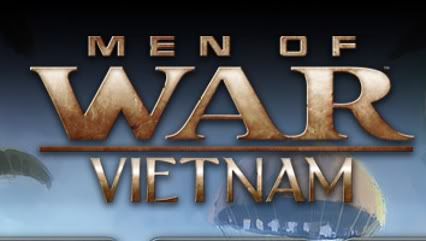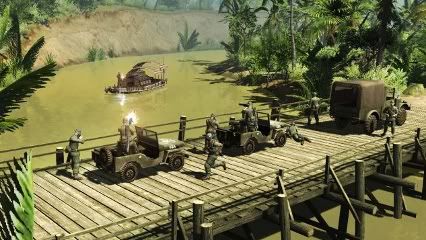
If popular media has taught us anything about conflict, it’s that war is hell. 1C Company on the other hand, developer of the latest entry in the Men of War series, seem to be quite happy to also reinforce the fact that war is hard. Men of War Vietnam puts you in the midst of the titular conflict zone and takes the RTS genre back to 1968.
We got our hands on four campaign missions that take place on both sides of the war, two in control of the US army, and another two with the North Vietnam forces at your fingertips. While the game is an RTS, it follows the same principles as the previous game and focuses on squad combat rather than resource collection and army production. You still have control of each individual unit, but the total number of controllable characters adds up to a small squad of four to 12 or so men.
It goes a lot deeper than the usual ‘select all and attack’ mantra that will get you through most campaign missions in other strategy games. We soon learned that this mentality was the best way to ensure we slowly lost all of our forces. On closer inspection it becomes obvious that each man under your control has different weapons and capabilities. They all have a basic inventory that can be filled up with weapons and equipment, such as M16s, med kits and helmets. The earlier claim that there is no resource collection element is not entirely true. Fallen enemies can be looted for extra equipment to add to each man’s personal inventory. It’s nice to see that looting the dead is a stigma still largely ignored by the laws of decency in videogame land.

Just like Apocalypse Now, but with less Martin Sheen.
Careful management of each man’s equipment is essential to accomplish what you set out to achieve. While the addition of individual inventories does give you the ability to mix and match gear for different situations, it seems a bit fiddly, with the inventory pop-up disabling all other interactions until the window is closed.
Objectives that ask you to take positions usually have a lot of ground around them and with many avenues for attack. These scenarios have several options, such as whether you take cover and mount a frontal assault or sneak through the bushes to the rear for a sneak attack. Stealth tactics can be employed with buttons on the user interface that issue orders to your men. For example, you can toggle the fire mode of your troops between ‘fire at will’, ‘return fire only’ or ‘hold fire’. This keeps your guys on a short leash and can help you negate some fights entirely, or at least aid in safer manoeuvring. The stance toggle acts in a similar way. This added control makes each unit feel like more than just a simple expendible pawn to be thrown at the next fight.
It is essential to use these commands if you want to survive a mission, or at least it was in the four missions we played. As such, your micro-management skills need to be sharper than a combat knife strapped to a pointy stick if you want to get anywhere. It took several attempts to finally get out of the mindset of games like StarCraft and Command & Conquer, and start to think more tactically. This improved survival odds, but not by a huge amount. You’ve got to carefully think about placement, angles of attack and even the amount of ammunition your squad has left. Even then, that’s not quite enough.

Two tanks share a romantic moment over a white flag.
There was one instance where a small explosion shook our squad and forced a tactical retreat. The men healed themselves with a pile of looted med kits, but then we realised that two of the foursome had dropped their guns. After a quick glance back to the site of the explosion, it looked as if the blast had knocked the guns straight from their hands. Therefore, an awkward and cautious trip back to the site was required. Situational awareness is far more important in Men of War Vietnam than it is in other strategy games.
Cover is part of this awareness, and gives your men the edge when it comes to a firefight or opportunity to lay low. It seems similar to Dawn of War II’s system, with a marker showing you how your forces will align should you tell them to huddle around that tree, or cuddle up together in the bush over there. Once under fire, the AI also has a similar cover routine at which point both sets of combatants will slowly chip away at each other’s health until there is a victor. At times this made the game feel unsatisfying, especially when you start to see your numbers start to dwindle against an enemy attack.
This strikes us as a game where you will need to save and load several times, especially on your first few attempts. The brilliant thing is that a save button isn’t cheating in a game like this. It encourages you to try multiple approaches to each scenario. Losing two or three men early on means you have to think extra hard about how to complete the mission, and perhaps use your reduced number to sneak through areas that a larger force would usually get caught up in.

This is what happens when you don't tip the staff on the river boat excursion.
The four scenarios we tried offered a great variety of missions, with objectives like a camp defence, base assaults and even a manhunt for a lone sniper. If the structure for other missions is anywhere near as diverse as these taster scenarios then Men of War Vietnam could be something quite special. The steep learning curve and level of punishment from a single tactical error might cause pencil snapping anguish for some RTS players, and so a few proper tutorial levels would be a godsend to ease in the newbies.
Men of War Vietnam will be sneaking onto shop shelves in September.
















Comments